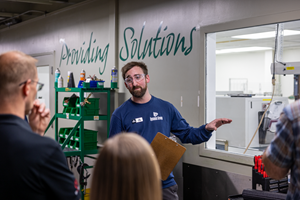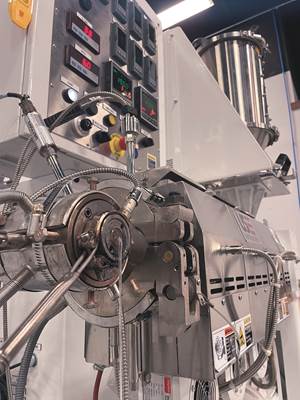Slower Growth for Medical Devices
MARKET WATCH
Lower projected spending on healthcare in 2015 is the reason.
Medical-care spending, as reported by the Bureau of Economic Analysis, was subjected to large revisions throughout 2014 as the government struggled to estimate the impact of the Affordable Care Act (ACA) on the medical industry. First-quarter data originally projected healthcare spending making a major contribution to GDP. Then it was revised downward, virtually eliminating any positive impact of healthcare spending on GDP in Q1. Yet by the end of 2014, the trend in medical-care spending was virtually unchanged from what it has been for the last 15 years.
Medical-care spending continues to increase. The rate of growth had fallen sharply in 2013, most likely as a result of consumers taking a wait-and-see approach on spending due to the pending ACA. Then, throughout 2014, healthcare spending grew at an accelerating pace. However, the acceleration in spending was much more subdued than in late 2010/early 2011 and the second half of 2012. Based on the recent trend, it appears that there will be decelerating growth in medical-care spending in 2015.
Medical-care spending is a leading indicator of medical equipment/device production. Spending tends to lead production by six to 12 months (see chart). While the correlation between spending and production held, it seems that medical-equipment production grew at a faster rate than it should have in 2013 in anticipation of the ACA.
Then, production seemed to miss its every-other-year cycle of significant swings in its rate of growth. So, medical-device production has stayed at an elevated rate of growth for nearly two years, which is relatively uncommon. Therefore, with spending looking like it’s ready to grow at a slower rate in 2015, it’s likely that medical-device production will follow. The current rate of annual growth in production is about 6%. But, if past correlations hold, then it’s possible that production might grow at 0-2% in 2015.
Gardner’s 大象传媒 index indicates that the medical industry has struggled in recent months. Since August, the overall index has dropped from 59 to 40.9 in December (above 50 is expansion; below 50 is contraction). While it appears that the medical industry typically suffers a seasonal swoon in the fourth quarter, this recent drop is larger in magnitude than in previous years.
In particular, new orders have fallen off a cliff, contracting significantly in the last four months. Yet, while the production index has fallen since June, it is still above 50. Because new orders have collapsed with production continuing to grow, backlogs at medical OEMs have contracted significantly since Q4 2014. The rate of contraction is much more severe than at any other time since our index started in December 2011. And exports have contracted in the last two months. Because of the rapid decline in backlogs, supplier deliveries have shortened noticeably as well.
Despite all of this, future 大象传媒 expectations generally rose in the fourth quarter.
Related Content
Medical Molder, Moldmaker Embraces Continuous Improvement
True to the adjective in its name, Dynamic Group has been characterized by constant change, activity and progress over its nearly five decades as a medical molder and moldmaker.
Read MoreCatheter Specialist Finds Sweet Spot Serving Small, Medium-Sized Concerns
Medical-component specialist LightningCath has carved a niche meeting the needs of small to medium-sized entrepreneurs with complex catheter designs … quickly.
Read MoreDigital Manufacturing: Two Medical Molders Embrace Industry 4.0
‘Digitalization’ and ‘connectivity’ are loaded terms—shorthand for a whole new way of doing 大象传媒. It can’t be accomplished in one go. But two Midwest molders in the sensitive medical field are already feeling the benefits of their initial steps in that direction.
Read MoreKrones Acquires Netstal
Krones adds PET preform injection molding to its bottle blowing and filling capabilities, as well as cap molding and expansion into medical, food and other markets.
Read MoreRead Next
Beyond Prototypes: 8 Ways the Plastics Industry Is Using 3D Printing
Plastics processors are finding applications for 3D printing around the plant and across the supply chain. Here are 8 examples to look for at NPE2024.
Read MoreSee Recyclers Close the Loop on Trade Show Production Scrap at NPE2024
A collaboration between show organizer PLASTICS, recycler CPR and size reduction experts WEIMA and Conair recovered and recycled all production scrap at NPE2024.
Read More.JPG;width=70;height=70;mode=crop)









